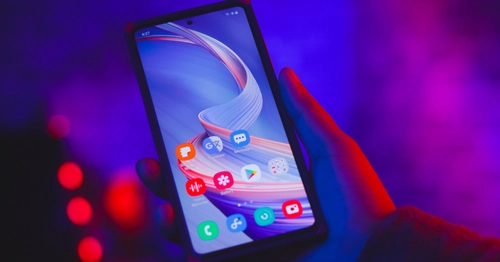Messaging app use in Asia has grown exponentially in recent years, with the average consumer spending more than two hours daily on messaging apps. And while the most popular chat apps used in Asia are WhatsApp, WeChat, and Facebook Messenger, it’s also important to note that individual markets are highly diverse. Certain apps are favoured in certain countries, such as Viber in the Philippines and Zalo in Vietnam.
The good news is that brands in Asia already recognize social messaging as an important channel for delivering proactive customer care, elevated customer experiences, and improved loyalty and retention.
But to make the most of chat apps, businesses need to take things to the next level. It starts by recognizing that chat apps aren’t just great for one-on-one conversations—they’re also a powerful means of mass broadcasting and getting the right branded content seen by converting audiences.
Cut through the marketing noise with chat apps
Effective customer engagement remains one of the top challenges for marketing leaders, with 87% of them stating that engagement is a key strategic priority in driving business growth. With ever-growing touchpoints and ever-changing customer demands, next-level acquisition and retention strategies are needed to grow customer lifetime value and expand into new markets.
But consumers are also suffering from inbox overload, caused by irrelevant product and content recommendations, resulting in over half (55%) of marketing messages going unread or ignored. For marketers, aligning the right message to the right channels is crucial to getting the attention of customers across all stages of the funnel. Here’s how to use chat apps, such as WhatsApp, Viber, Zalo, and Facebook Messenger, to overcome customer engagement challenges and add value to marketing campaigns.
Better nurture social media leads
Brands like Samsung and Mizuchol & Page365 have taken advantage of Meta’s click-to-Messenger and click-to-WhatsApp ads to reach out to new audiences, improve brand recall, and increase purchase intent.
The premise is simple—hook audience attention with social media ads, and amplify impact by extending the conversation with personalised engagement. Brands can send educational content or answer specific questions related to products featured in their ad, and even take the opportunity to upsell or cross-sell products.
Kick-start the purchasing process
WhatsApp Business allows brands to add products to an in-app catalogue for easier customer sharing and discovery. Rather than redirect consumers to a separate platform, brands can use the catalogue feature to reduce friction and introduce products and services with minimal disruption to the consumer journey.

Catalogues can be curated based on season or interest, such as birthday gift ideas, holidays, or discount events. WhatsApp for Business even allows brands to take things a step further with the cart feature, which provides a way for customers to add items to a cart for “pre-checkout” and begin the order process directly from their chat app.
Offer exclusive discounts and encourage referrals
A survey of millennial consumers revealed that 67% would make a purchase if they had a coupon on hand, even if they didn’t initially plan on buying anything. This is often referred to as the theory of loss aversion, where consumers are unwilling to miss out on an opportunity to take advantage of an offer.
Marketers can leverage this psychological effect by using scarcity and urgency to drive purchases. Offering chat app-exclusive access to flash sales and limited-quantity discounts can be powerful conversion tools if used in moderation. And if exclusive access is not possible, brands can also consider giving chat app customers first choice on discounted items to incentivize continued engagement.
Chat apps also grant businesses the ability to send virtual coupons that can be redeemed to encourage quicker spending. These same coupons can be easily shared between customers’ friends and family too, especially since they’re already on an app with direct access to their contacts.
Conduct market research
What better way to understand a target audience than to poll them directly? Chat apps are perfect for marketers to gather valuable data on consumer preferences, sentiment, and even collect testimonials.
While a typical customer service survey may ask, “How satisfied were you with the services you received today?” or “Was your issue resolved in a timely and efficient manner?,” marketing teams can ask questions such as:
- Where did you first hear about us?
- Why did you choose our product/service over others?
- What features do you wish our product/service had?
- Which brands do you consider to be our closest competitors?
- Which channel(s) are you most comfortable making a purchase on?
- What is your top consideration when making a purchasing decision?
Since customers are already comfortable communicating on platforms like WhatsApp and Facebook Messenger, they’re more likely to respond and collaborate with businesses engaging with them on such channels. Bonus points if they are rewarded with a token of appreciation at the end.
Managing campaigns is a breeze with 8×8 Connect

Omnichannel campaign management is made easier with a single platform that consolidates all your customer conversations and messaging statistics across multiple chat apps on one interface. 8×8 Connect does exactly that—it brings all your channels together for better monitoring, execution, and optimization of marketing campaigns. The portal delivers real-time reports for improved analytics, and it can be integrated with multiple engagement channels, including SMS, chat apps, voice, and video.

The 8×8 Connect Automation Builder further optimises time and human resources by streamlining time-consuming, repetitive processes. The no-code, drag-and-drop solution allows marketing teams to build and customise even the most complex of messaging workflows, so that customers still receive the most relevant, personalised experience with minimal manual involvement from the team. Even upselling and cross-selling campaigns can be automated based on customer details, such as previous purchases, past interactions, or even demographic information.
Maximise the benefits of chat apps by making it an integral part of not just your customer service strategy, but also your marketing strategy. Watch our demos, or find out more about 8×8 Chat Apps to see how easy it is to start planning, executing, and managing your omnichannel messaging campaigns.




